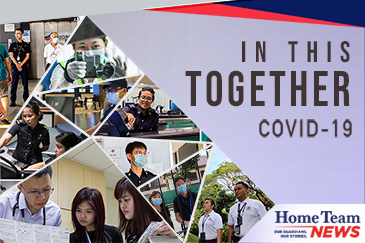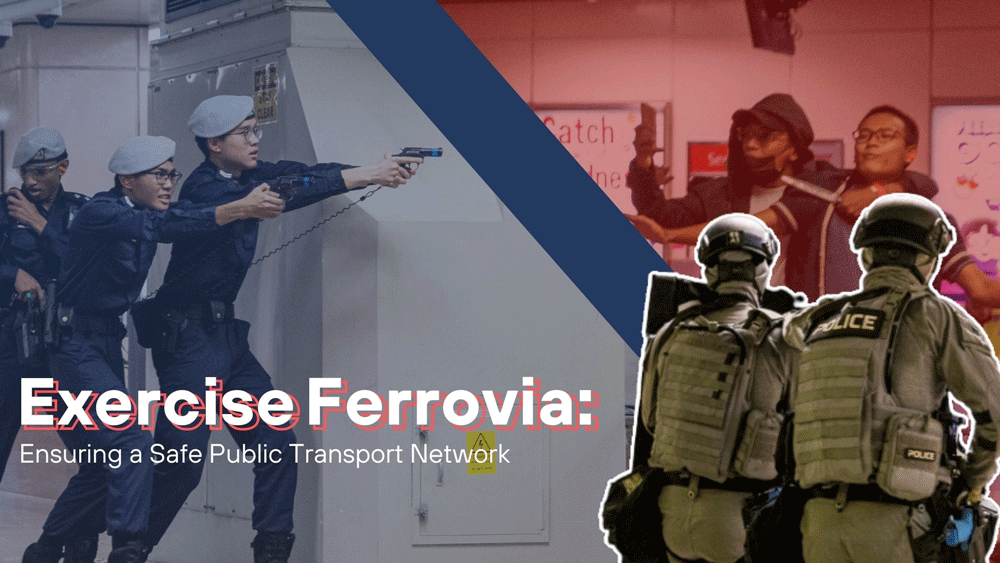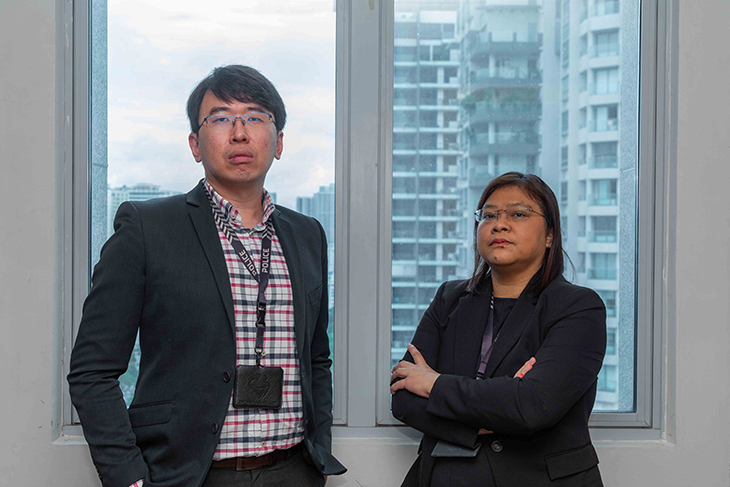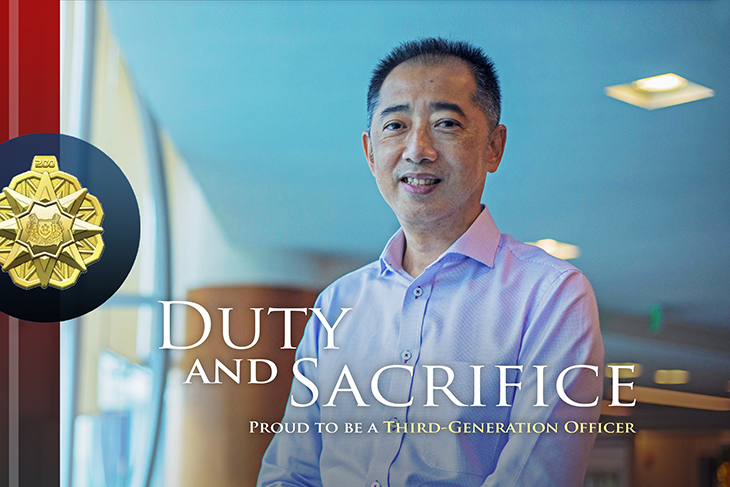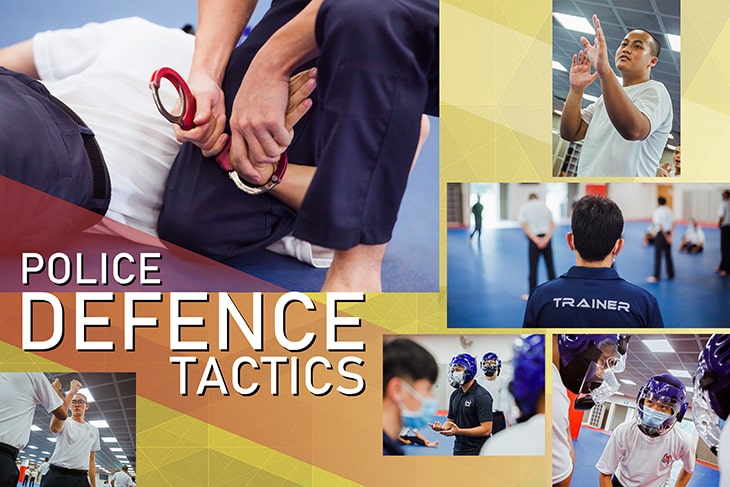
With over 20 years of experience in the Singapore Police Force (SPF), Inspector (INSP) Tan Kien Hwee understands how incidents on the ground can take a turn for the worse in an instant.
“As Police officers, we know that each incident that we respond to is unique and comes with certain risks,” explained INSP Tan, Officer-in-Charge of Police Defence Tactics (PDT) training at SPF’s Training Command. “For example, a suspect may refuse to comply with officers’ instructions, become belligerent or aggressive – especially if he has committed a crime – and even turn violent.”

INSP Tan Kien Hwee at SPF’s Training Command, at the Home Team Academy.
That’s where PDT comes in. “When a suspect resists arrest,” explained INSP Tan, “officers must act swiftly to restrain him and bring him to safety while ensuring the safety of members of the public and fellow officers at the scene. In fact, the safety of a suspect is as important as that of everyone else.”
PDT is an essential part of a Police officer’s training. It encompasses a range of techniques that prepare officers for the dynamic operating environments and threats they encounter in the line of duty.
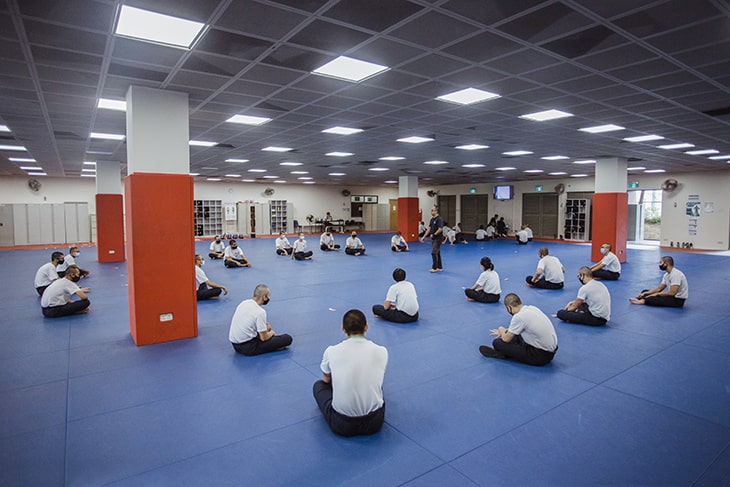
In late-2020, Home Team News visited SPF’s Training Command at the Home Team Academy to learn more about the rigorous PDT training that officers undergo. Under the watchful eye of INSP Tan and his fellow Trainers, a cohort of Police Trainees were put through their paces.
A trained practitioner of
taekwondo and
wushu, INSP Tan served with a specialist Police unit for 11 years before joining Training Command in 2011. He began the training session by sharing with Trainees the principles of PDT.
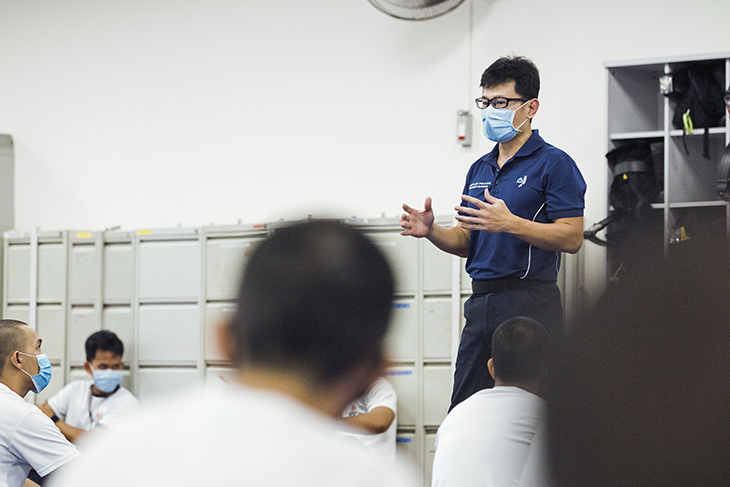
“Things can change in a split-second on the ground,” he explained. “The key thing we must do as officers is to evaluate the threat posed to us and members of the public, and then decide on the most appropriate course of action, including the force that's needed, to swiftly mitigate the threat.”
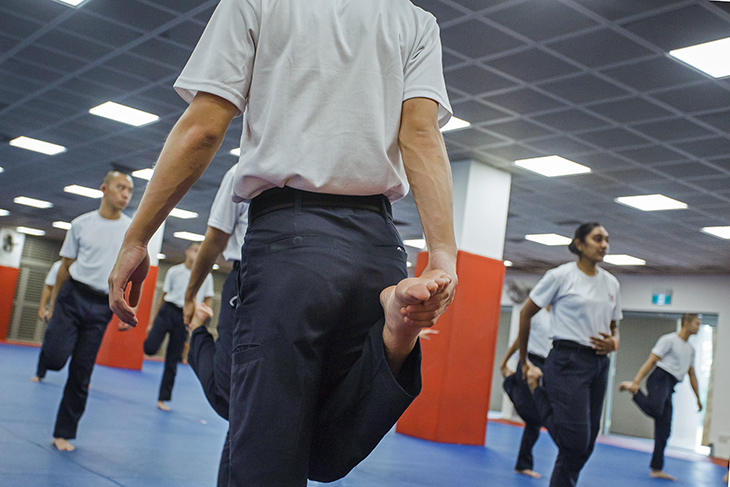
After a safety briefing and reminder of the COVID-19 Safe Management Measures in place, INSP Tan and his fellow PDT Trainers took the Trainees through a series of stretching and warm-up exercises.
One vital aspect of PDT training is teaching officers to remain vigilant and calm. “Often, when officers are conducting patrols or responding to an incident, they may approach suspects who don’t show any initial signs of aggression, but this can change suddenly,” said INSP Tan. “That’s why officers must be primed to expect the unexpected. We must always be alert and poised to respond.”
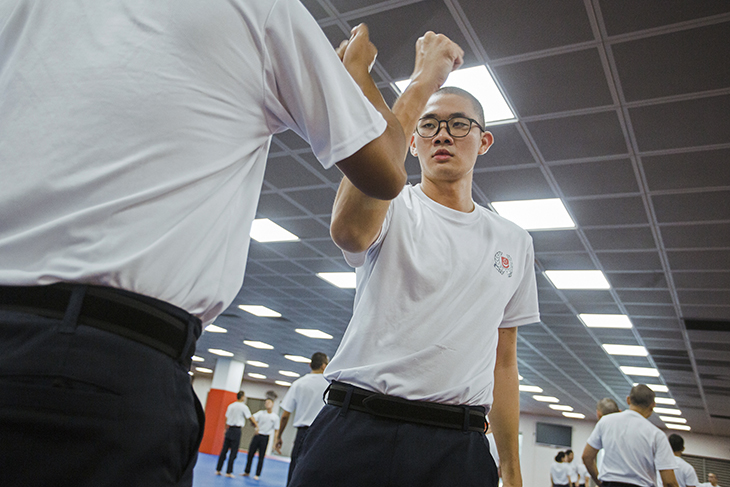
We watched as the Trainees practised restraining techniques such as wrist-locks and take-downs. Besides allowing the Trainees to sharpen their techniques, rigorous practise enhances their physical conditioning and endurance.
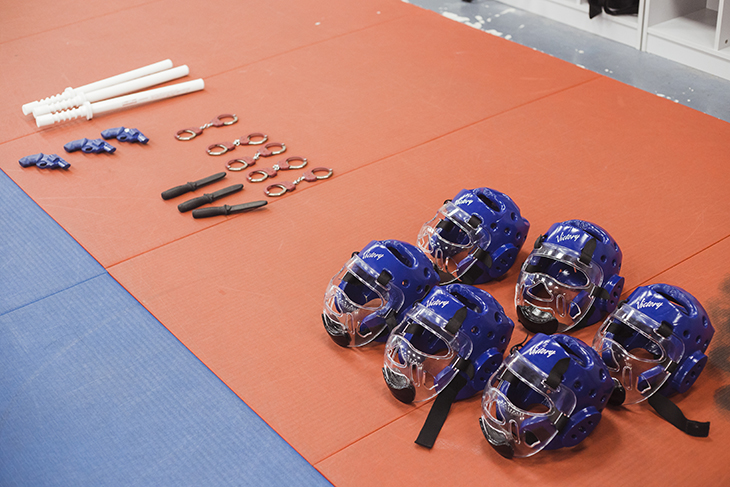
After a quick break to grab a drink and use hand sanitisers, the Trainees donned protective headgear and proceeded to practise with training batons and handcuffs. These simulate the vital tools required if an encounter turns violent.
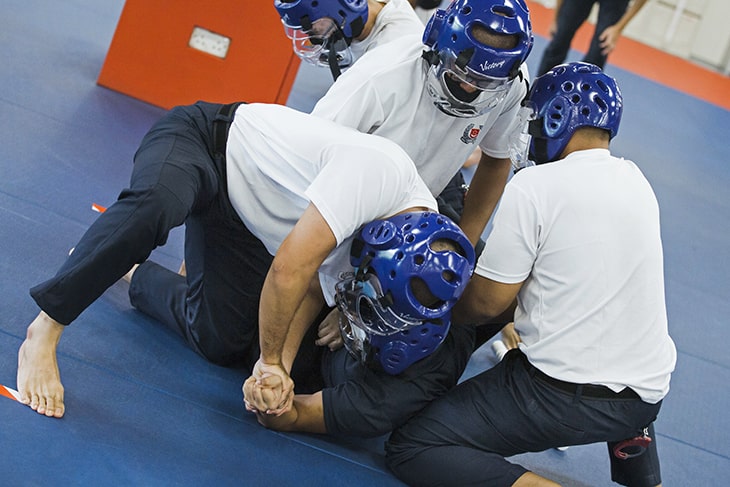
The Trainees practised their moves on a PDT Trainer who was role-playing as a violent suspect. It was a challenging assignment, to say the least.
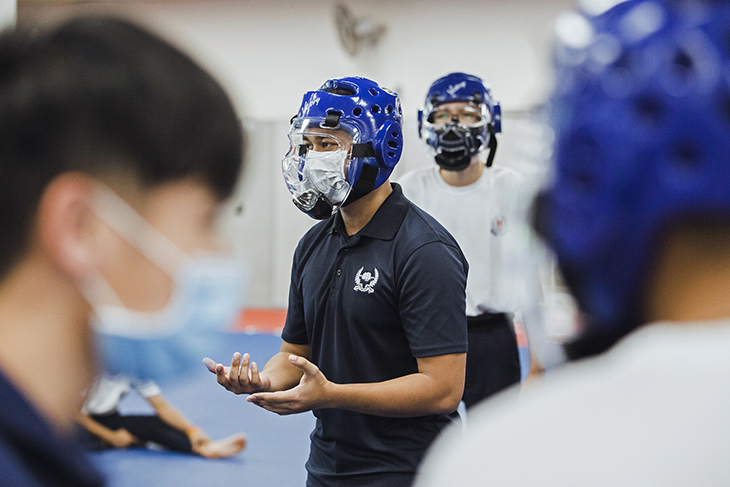
Meanwhile, other Trainers watched closely and stepped in occasionally to demonstrate the proper defensive techniques and use of equipment.
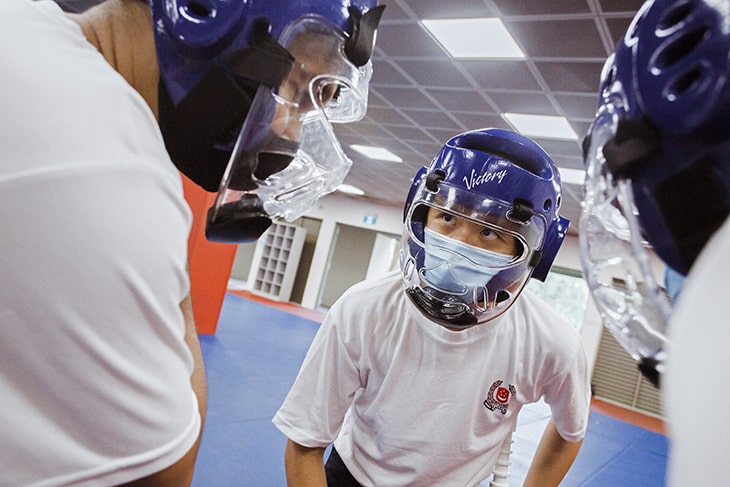
According to INSP Tan, PDT sessions are intensive by design. “Actual arrest scenarios are unpredictable, and we want to simulate such scenarios in training as closely as possible,” he explained. “For example, for one scenario-based training session, Trainees must do a series of physical activities before closing their eyes. Once they open their eyes, they must react immediately to an attack by using the PDT techniques they’ve learnt. This prepares Trainees for instances when they have to make split-second decisions on the ground.”
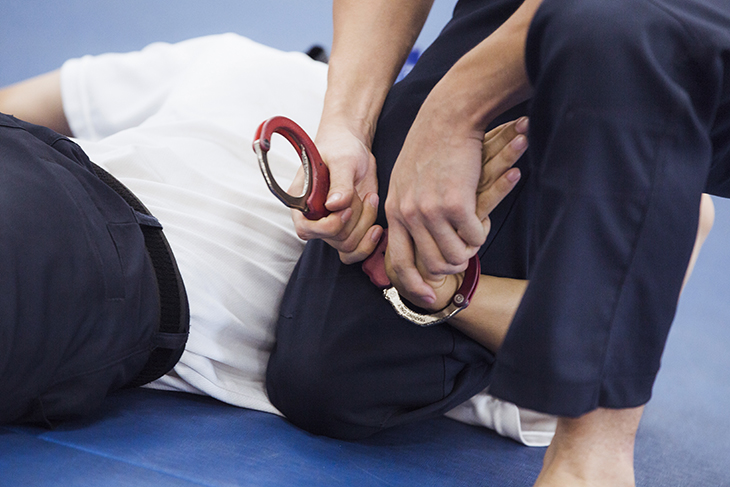
But it isn’t only Trainees who undergo PDT training; as part of his duties, INSP Tan also conducts refresher training for regular Police officers so that they can keep up with the latest PDT techniques and Standard Operating Procedures.
The session ended with a reminder of the fundamentals of PDT by the Trainers – stay vigilant, remain calm, evaluate the threat posed to officers and members of the public, and decide on the most appropriate course of action, including the force that’s needed, to swiftly mitigate the threat.
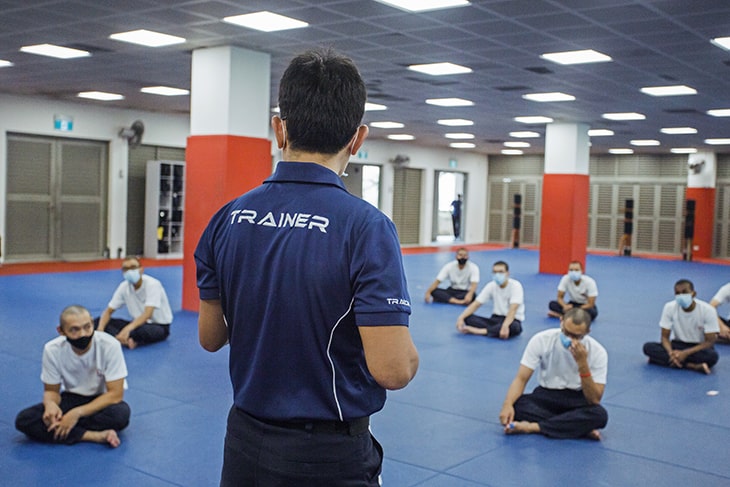
PDT is a fundamental competency for Police officers and passing the training programme is no easy feat. But INSP Tan is committed to helping all Trainees learn this skill, to prepare them for their duties.
“As Police officers, we put our safety on the line and need to be ready for any threats that we may face on the ground,” he said. “That’s why all Trainees must meet our requirements to pass the PDT course. There was one Trainee who needed extra time and guidance to learn the techniques. All of us Trainers took turns to guide him, and it was a satisfying moment for us when he finally passed the course.”
Keeping Singapore Safe and SecureLaw enforcement officers are empowered to use force in discharging their duties. This includes situations that require protecting and saving lives, preventing the commission of an offence and arresting suspects who have committed offences. On 26 February 2021, the Ministry of Home Affairs provided a reply in Parliament on the use of appropriate and proportionate force by officers. Read the reply
here.













